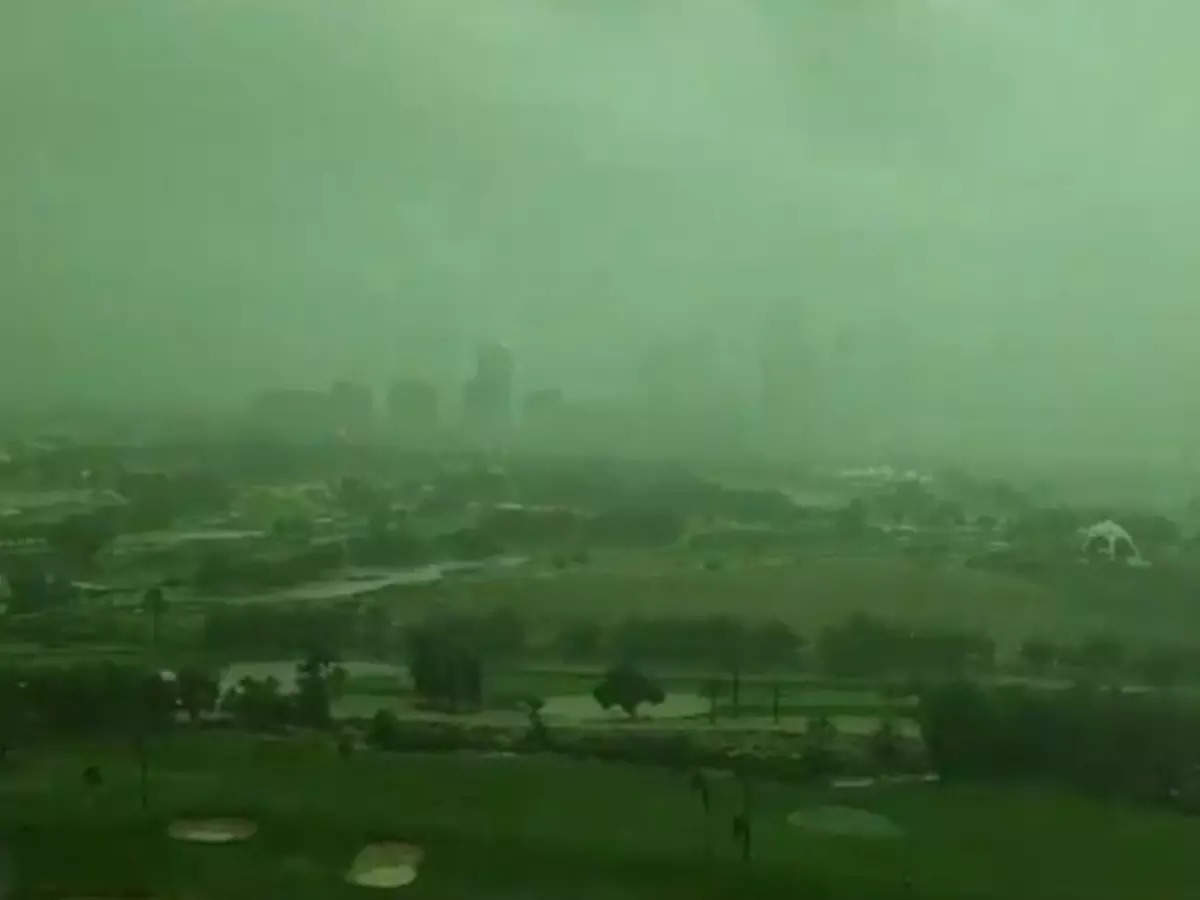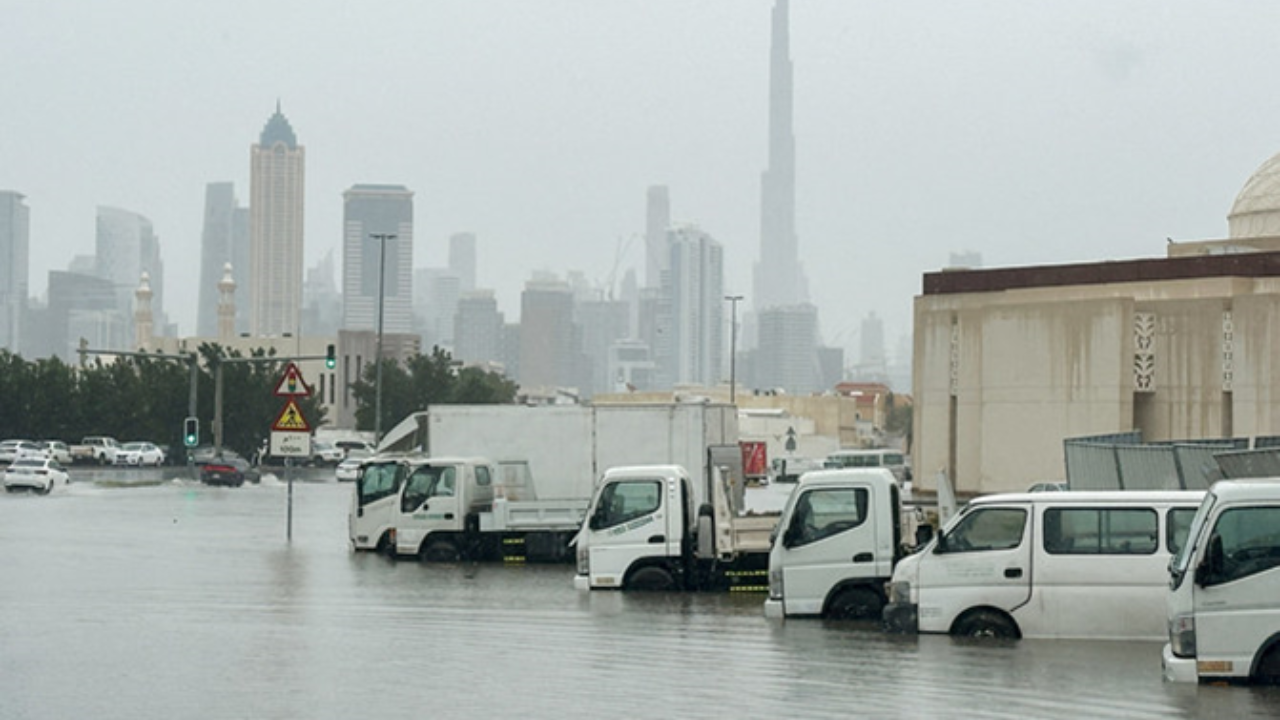Social media platforms were inundated with images and videos depicting the aftermath of the torrential rain. One particularly striking video showcased Dubai’s usually grey skyline transformed into shades of green during the storm. Shared by a user with the caption “Sky turns green In Dubai! Actual footage from the storm in #Dubai today,” the 23-second clip garnered considerable attention, amassing 147.8K views since its upload.
Did Dubai witness a derecho?
A storm qualifies as a derecho when it sustains winds of very high speed and causes damage along a path of hundreds of kilometre. According to a Euronews report, the reason behind the green hue of the sky remains not fully understood. However, most scientists attribute it to the presence of liquid water content in the atmosphere. This celestial phenomenon occurs when clouds hold a significant amount of water, allowing primarily blue light to penetrate through the storm cloud. As this blue light interacts with the sun’s red light, it creates a green hue in the sky.
What caused the record Dubai rains?
In the arid climate of the UAE and the broader Arabian Peninsula, rainfall is a rare occurrence, with summer temperatures often exceeding 50 degrees Celsius. Concerns were raised following Tuesday’s heavy rains regarding the potential role of cloud seeding, a process frequently employed by the UAE to enhance precipitation in water-scarce environments. Cloud seeding involves introducing chemicals into clouds to stimulate rainfall. While the UAE has been at the forefront of cloud seeding efforts, the country’s meteorology agency denied conducting such operations before the recent storm.Experts attribute the substantial rainfall to a typical weather system exacerbated by climate change. A low-pressure system in the upper atmosphere, combined with surface-level low pressure, created ideal conditions for intense thunderstorms. Climate scientists emphasize that global warming intensifies extreme weather events like heavy rainfall due to increased atmospheric moisture retention.Friederike Otto of Imperial College London notes that while rainfall is becoming heavier globally due to a warmer atmosphere’s enhanced moisture-holding capacity, cloud seeding cannot initiate cloud formation from nothing. Instead, it accelerates the condensation of existing moisture. Mark Howden of the Australian National University highlights how warm sea temperatures and atmospheric conditions contribute to intensified rainfall events, exacerbated by climate change. (With Agency Inputs)









